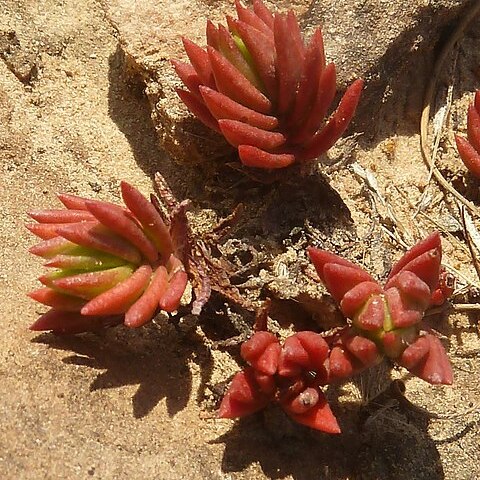Perennial, succulent herb, several terminal rosettes on fleshy stems, 0.05-0.25 m high, fleshy roots, old leaves not deciduous. Leaves linear-triangular, 5-15 x 2-3 mm, acute, scarcely broadened towards base, glabrous or minutely papillose, fleshy, green tinged red. Inflorescence of several dichasia ending in monochasia with pedicellate flowers; peduncle indistinct or up to 40 mm long. Calyx fleshy, green tinged red. Corolla star-shaped, fused at base for 2 mm, white tinged red; lobes elliptic to obovate, 3.0-4.5 mm long, rounded apex and faintly ridged, spreading. Flowering time Jan.-Apr.
Perennial herb, with several terminal rosettes on fleshy stems, up to 0.4 m high. Leaves fleshy; blade narrowly linear-ovate, 5-15 x 2-3 mm, apex acute, almost terete, glabrous, sometimes minutely papillose, green, often tinged red or reddish brown. Flowers: inflorescences terminal on axillary branches; 5-merous; anthers yellow; calyx lobes abruptly constricted into blunt apices; corolla star-shaped, lobes elliptic to obovate, 3.0-4.5 mm long, white, tinged red; Jan.-Apr.
Succulent perennial herb, with several terminal rosettes. Leaves linear-lanceolate, subulate and sessile. Inflorescences terminal on axillary branches. Flowers star-shaped. Flowers white, tinged red.

